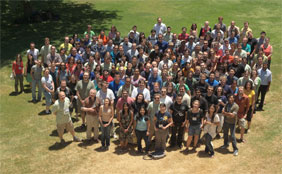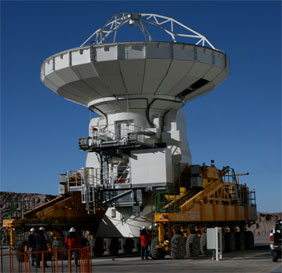NRAO eNews
Volume 3, Issue 7 • July 29, 2010
Upcoming Events
 NRAO Proposal Deadline
NRAO Proposal Deadline
October 1, 2010 5:00 PM EDT
 NRAO Town Hall - 217th AAS Meeting
NRAO Town Hall - 217th AAS Meeting
January 11, 2011 | 6:30 PM | Seattle, WA
 Early Science with the EVLA - Special Session - 217th AAS Meeting
Early Science with the EVLA - Special Session - 217th AAS Meeting
January 12, 2011 | 10:00 AM | Seattle, WA
 Observing with ALMA - Special Session- 217th AAS Meeting
Observing with ALMA - Special Session- 217th AAS Meeting
January 12, 2011 | 2:00 PM | Seattle, WA
 ALMA: Extending the Limits of Astrophysical Spectroscopy
ALMA: Extending the Limits of Astrophysical Spectroscopy
January 15–17, 2011 | Victoria, British Columbia
Travel Funding Opportunity for Early Career Scientists
Aaron Evans

The National Radio Astronomy Observatory (NRAO) is offering an exceptional collaboration opportunity for students and young researchers pursuing theoretical astrophysics numerical simulation research. As part of its mentoring and outreach activities in support of international programs, the NRAO has proposed to the National Science Foundation that the NRAO send a contingent of approximately three to four students and young researchers to attend the "The Fourth East Asian Numerical Astrophysics Meeting." The meeting aims to cover research fields involving numerical simulations of stars and planets on small scales to cosmological structures on large scales.
This international workshop is being sponsored by the Academia Sinica Institute of Astronomy & Astrophysics (ASIAA), Astronomical Society of the Republic of China (ASROC), and the Theoretical Institute for Advanced Research in Astrophysics (TIRA).
Below are what we anticipate will be the most frequently asked questions regarding this opportunity.
What is the website for conference information?
http://events.asiaa.sinica.edu.tw/conference/eanam2010/index.php
What are the conference dates?
November 2-5, 2010
What is the location of the conference?
Astronomy-Mathematics Building, National Taiwan University, Taipei, Taiwan
Who is eligible to attend?
Students and early career researchers with an interest in the field of
numerical astrophysical simulations.
What costs will be covered?
Funding is intended to cover registration fees, round trip airfare from home
institution, lodging at the conference, per diem, and direct costs related
to traveling to and attending the conference.
Will I need to make travel and conference arrangements?
No, the NRAO staff will make the necessary airline and lodging reservations
on your behalf.
How do I apply?
You can apply by sending a curriculum vita and a statement of interest via email to
hfoster@nrao.edu.
When are applications due?
August 12, 2010
Who can I contact for more information?
Contact Holly Foster at hfoster@nrao.edu.
Pre-registration Open for ALMA Spectroscopy Workshop
Anthony Remijan and Gerald Schieven (NRC-Canada)

Pre-registration is now open for the “ALMA: Extending the Limits of Astrophysical Spectroscopy” workshop that will be held 15 – 17 January 2011 in Victoria, British Columbia. The National Research Council of Canada (NRC), the North American ALMA Science Center (NAASC), and the Center for Chemistry of the Universe (CCU) are jointly hosting this workshop that will highlight the Atacama Large Millimeter/submillimeter Array (ALMA) capabilities and scientific opportunities that will soon be available to the community.
You must pre-register via a brief on-line form to receive future e-mail announcements about this workshop, and to submit your final workshop registration. Given the venue size, meeting attendance will be limited to about 100 participants, on a first-come, first-served basis once full registration opens on 1 September 2010.
We sincerely hope you will consider attending this workshop and join the community in realizing the full potential of ALMA!
Additional information about this ALMA workshop.
Twelfth NRAO Synthesis Imaging Workshop
Amy Mioduszewski

Figure 1: Attendees at the Synthesis Imaging Workshop listen to a presentation by Claire Chandler, Deputy Assistant Director and Head of the Array Science Center in Socorro.
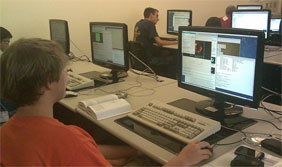
Figure 3: Workshop attendees participated in hands-on tutorials, reducing IRC10216 and 3C391 data acquired with the Expanded Very Large Array (EVLA).
The Twelfth Synthesis Imaging Workshop was held June 8-15, 2010 in Socorro, NM. Most of the workshop was held at Workman Center on the campus of the New Mexico Institute of Mining and Technology (NMT). The data reduction tutorials were partially held at NRAO's Domenici Science Operations Center in Socorro. There were four days of lectures and two days of data reduction tutorials. Other events included a reception, workshop dinner, hikes of the Magdalena Mountains and the Bosque del Apache, a pool party and barbecue, and a popular tour of the Expanded Very Large Array.
There were 154 registered participants from 14 countries ranging from Canada to Taiwan. Over half (68%) the participants were graduate students; undergraduates (13%), postdocs (10%), scientific and engineering staff (8%), and faculty (1%) also attended.
New this year was an additional day of data reduction tutorials. All new datasets were used for the EVLA, millimeter and VLBA tutorials. The two new EVLA datasets were a seven pointing mosaic of supernova remnant 3C391 and a spectral line observation of AGB star IRC10216 at 36 GHz. The millimeter-wavelength dataset was a CARMA spectral line mosaic of M99. The datasets and a guide to reducing them in CASA can be found at http://casaguides.nrao.edu/.
Eighteen of the 25 lecturers were from NRAO. The other lecturers were from University of New Mexico, Harvard-Smithsonian CfA, University of Iowa, the Naval Research Lab, and the Canadian Institute for Theoretical Astrophysics. We thank all the lecturers for giving their time and talents to the workshop.
We thank NRAO and AUI for providing logistical and financial support and a majority of the lecturers. We are grateful to New Mexico Tech (NMT) for providing the use of their facilities, and particularly support of the NMT Physics department. We also thank the University of New Mexico and the New Mexico Consortium at Los Alamos National Laboratory for financial support.
EVLA D-configuration Extended Until September 13, 2010
Robert Dickman
Wideband operation of the EVLA, with up to 2 GHz per polarization, was achieved at the beginning of July. Commissioning of wideband observing has been proceeding over the last few weeks. The delay in commissioning the wideband observing modes has limited the time available for the Resident Shared Risk Observing program. NRAO has therefore decided to further extend the current D-configuration until September 13, 2010. All future array configurations will remain at their originally-planned durations, but will have their start dates offset. The revised configuration dates may be found here.
ALMA Accepts Its Tenth Antenna
Al Wootten

Figure 1: Five antennas at the 5000m Array Operations Site on 14 July 2010. The Technical Building (right, background) houses the correlator and other array electronics. Credit: Al Wootten, ALMA/ESO/NAOJ/NRAO.
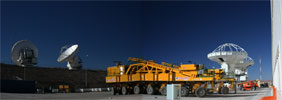
Figure 3: Four antennas undergo readying for inclusion in the array at the OSF. Antenna DV08 (right, background) was recently delivered by the transporter; antenna DV06 is behind it. Antennas DV04 and DV07 are at left.
On 8 July, ALMA antenna PM02 was moved from the 2900m altitude Operations Support Facility (OSF) to the 5000m altitude Array Operations Site (AOS), the second NAOJ antenna to make this long trip. It joined four antennas already at the high elevation site. Its sibling, PM03, had returned to the OSF for planned upgrades a few weeks earlier; it will return to the AOS in August.
Antenna DV04 joined these five on 26 July, bringing the array to six and maintaining the pace needed to meet the project target of eight antennas at the AOS by the end of August. The twenty-eight baselines available between these eight antennas will offer a marked improvement in ALMA’s imaging ability. With five antennas, the array provided ten baselines; imaging excellence increases approximately as the square of antenna number.
While essentially all of the ALMA hardware is in place, the software that enables its use is deployed in incrementally, at six-month intervals. Hardware functionality can only be fully tested according to the ability of the software releases to accommodate the tests. A new software release containing many new capabilities was released in June and installed on the array. A particular focus now is, of course, the testing of capabilities that are scheduled for availability during ALMA Early Science, expected next year.
Antennas are moved to the AOS after being provisionally accepted at the contractor’s site and moved to the OSF. Each antenna is outfitted with electronics and put through exhaustive tests at the OSF by the Assembly, Integration and Verification (AIV) team. Antenna DV08 recently became the tenth ALMA antenna to begin the process, after its 13 July move from the contractor’s on-site facility to its new ALMA home. After outfitting and initial tests, the antennas at the OSF are normally combined into a two-element interferometer for final tests. This interferometer also provides a staging platform for new software, as was done for the recent release. With the move of DV04, three antennas are currently undergoing testing at the OSF and interferometry there will undergo a short hiatus as tested antennas move to the AOS.
GBT Servo Project Achieves First Digital Loop Closure
Pete Whiteis and Marty Bloss
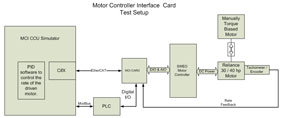
Figure 1: Block diagram of the test setup used for integration of the GBT digital servo control system
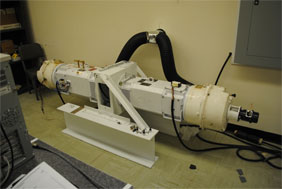
Figure-2: GBT motor test stand. Two motors complete with brakes and tachometers are hooked together with one motor driven and the second providing a load.
As part of the multi-year program to improve the high-frequency performance of the GBT, the original analog servo system installed during telescope construction is being replaced with a digital servo control system. Aside from replacing an aging system, the new digital servo provides an architectural framework that enables Advanced Motion Control algorithm development (e.g. energy balance) and can be easily enhanced to add new control parameters.
The new servo consists of a control kernel that contains the telescope model(s) and generates the critical commands for telescope operation. At each GBT azimuth and elevation motor, a new A/D interface card handles command processing and status returns for the motor via an industrial grade Ethernet-style communications protocol. In 2008, a new programmable logic controller (PLC) replaced the analog rate loop board on the GBT for low-level command execution and telescope safety logic. All these sub-systems are coordinated by the control software that is also the primary operator interface and fault monitoring system.
The Servo Replacement Project achieved a major milestone in March of this year when it demonstrated closed loop motion control of a GBT telescope motor using the newly developed digital hardware, validating the architectural components that have been under development for over a year. This effort required an integration of fairly complex new components of the system, including:
- Central Control Unit (CCU) software responsible for tunable closed loop control of Azimuth and Elevation motor drives
- Embedded digital controller(s) handling local I/O processing at the motor drive.
- EtherCAT, a high speed communication bus based on Ethernet hardware, facilitating cyclical communication between the CCU and the embedded controllers.
- An analog interface card to the existing motor drives.
- New PLC logic to handle telescope protection requirements.
While the digital servo control system will be completely new, the observer interface to the GBT will remain the same. Once the new servo is installed, tested, and commissioned, the telescope modeling engineers will be able to make the changes necessary to improve tracking accuracy and performance in higher winds, yielding more useful observing time. Teaming the servo up with the now-implemented Dynamic Scheduling system will improve the number of usable hours on the GBT at all frequencies.
Installation of the new servo system on the GBT is scheduled for summer 2011.
2010 Grote Reber Medal
Helen Sim (ATNF) and Ken Kellermann
The 2010 Grote Reber Gold Medal for outstanding and innovative contributions to radio astronomy has been awarded to Alan Rogers, a Research Affiliate at the Massachusetts Institute of Technology Haystack Observatory. Rogers is being honored for his many pioneering developments in radio and radar interferometry, radio spectroscopy, and for his application of radio astronomy techniques to society.
The Medal was presented on 7 July 2010 in Hobart, Tasmania, at the annual meeting of the Astronomical Society of Australia. The Reber Medal was established by the Trustees of the Grote Reber Foundation to honor the achievements of Grote Reber and is administered by the Queen Victoria Museum in Launceston, Tasmania.
Alan Rogers received his B.Sc. in mathematics and physics from the University College of Rhodesia in 1962, and his S.M. and Ph.D in Electrical Engineering from MIT in 1964 and 1967, respectively. Following a year as a Lecturer at the University of Zimbabwe in 1968, he has since been at the Haystack Observatory, where he was the Associate Director until his retirement in 2006.
Rogers is best known for his contributions over many decades to the techniques of very long baseline interferometry. More recently, he developed an innovative radio array which he successfully used to detect the 327 MHz line of interstellar deuterium, capping a 40-year quest for this important astrophysical atomic gas. He was also the leader of a program to apply radio astronomy techniques to locate emergency calls from mobile telephones.
Rogers is now working with Judd Bowman of Caltech on an Epoch-of-Reoinization (EoR) project, the Experiment to Detect the Global EoR Signature (EDGES). The aim of this NSF-funded experiment, which uses a single low-frequency dipole antenna and a high dynamic-range radio spectrometer, is to detect the cosmological EoR, a significant but poorly understood period in the history of the Universe. The experiment measures the all-sky radio spectrum between 100 and 200 MHz to probe the global evolution of 21-cm emission from neutral hydrogen gas at high redshift. In this type of measurement, reionization should produce a faint, step-like contribution to the spectrum that is superimposed on the much brighter Galactic synchrotron foreground. The observed frequency of the “step” and its sharpness encode both the redshift and duration of the reionization epoch. The EDGES antenna and receiver were deployed in August 2009 at the Murchison Radio-astronomy Observatory in Western Australia. The first three-month deployment of EDGES was successful, and yielded constraints on reionization that have implications for future EoR experiments.
Next year, 2011, is the 100th anniversary of Grote Reber’s birth. Nominations for the 2011 prize close on 15 October 2010. To nominate an achiever in radio astronomy for the Medal, please send a cover letter and supporting material (e.g. CV and bibliography) to:
Martin George
Queen Victoria Museum and Art Gallery,
PO Box 403, Launceston, Tasmania 7250, Australia
or by e-mail to martin.george@qvmag.tas.gov.au
For more information: http://www.qvmag.tas.gov.au/?articleID=539
Recent Press Releases
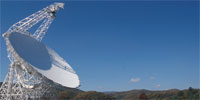 Radio Astronomers Develop New Technique for
Radio Astronomers Develop New Technique for
Studying Dark Energy
21 July 2010: Pioneering observations with the National Science Foundation's Robert C. Byrd Green Bank Telescope (GBT) have given astronomers a new tool for mapping large cosmic structures. The new tool promises to provide valuable clues about the nature of the mysterious "dark energy" believed to constitute nearly three-fourths of the mass and energy of the Universe. Read more...
From the Archives
Ellen Bouton

About this month's photograph: For many years, Hein Hvatum, long-time NRAO Associate Director and avid bicyclist, organized a group each summer to bicycle the 120 mountainous miles from Charlottesville to Green Bank to attend the annual Green Bank picnic. The group rode to Green Bank on Friday, went to the picnic on Saturday, and many of them then cycled from Green Bank back to Charlottesville on Sunday. In this 1984 photo, riders pause for a break in Monterey, VA (left to right): Bill Cotton, unknown, Kurt Riegel, Tom Brookes, Craig Walker, unknown, Hein Hvatum. If any readers can identify the unknown riders, please contact Ellen Bouton, ebouton@nrao.edu.
From the Archives is an ongoing series illustrating NRAO and U.S. radio astronomy history via images selected from our collections of individuals' and institutional papers. If readers have images they believe would be of interest to the Archives, please contact Ellen Bouton, ebouton@nrao.edu.
Career Opportunities
New Postings
Human Resources Manager – IS: The Joint ALMA Observatory (JAO) in Santiago, Chile is seeking a Human Resources Manager for International Staff and Head of Internal Communications. The successful candidate will report directly to the JAO Director and be a member of the ALMA Human Resources Advisory Group, acting as its Secretary, organizing meetings, suggesting agenda items and presenting status reports to the group. She/he is also responsible for the internal communications inside the JAO and with the ALMA Executives.
Electronics Engineer, Senior: The Joint ALMA Observatory (JAO) in Santiago, Chile is seeking a senior engineer to become the Manager of the ALMA Instrument Group. He/she will lead a team of approximately 50 people responsible for ensuring all instrumentation subsystems are operating reliably and to specification, which includes response to and resolution of electronics problems reported by the ALMA Department of Science Operations.
Software Engineer II: The National Radio Astronomy Observatory in Socorro, NM invites applications for the position Software Engineer. The successful candidate will be part of a team that creates software that allows astronomers from all over the world to configure observations on the Expanded Very Large Array (EVLA). In addition to writing the observation preparation software, the team also writes software for accessing the data taken by the telescope, and in-house software for scheduling observations on the instrument.
Web Designer:Work in consultation with NRAO scientific, technical, and outreach staff to design, develop, and maintain the Observatory's science web site that communicates scientific and technical information to scientific users of the NRAO research facilities. Works in consultation with a range of Observatory stakeholders to design, develop, and maintain the NRAO Intranet as a visually attractive and effective internal communication tool.
Mechanical Engineer II: The National Radio Astronomy Observatory in Socorro, NM is seeking a Mechanical Engineer to carry out and assist in engineering analysis, design, and general execution of a project or whole system. The successful candidate will be responsible for recommendations, coordination and assisting in decisions on such aspects as design, procurement, manufacture, erection, test and some degree of initial operation.
Software Engineer II (CASA Programmer): The Common Astronomy Software Applications (CASA) group has an immediate need for development of high-performance computing algorithms/packages and cluster environment support. The Software Engineer will develop high-performance computing algorithms/packages and cluster environment support.
Software Engineer II: The Software Development Division in Green Bank, WV is seeking a Software Engineer to help design, develop, implement, and support the Dynamic Scheduling System for the Green Bank Telescope. The Dynamic Scheduling System is broken into three major components: a web application built with the Django web development framework, a series of custom user interfaces built with Ext GWT, and the core scheduler implemented in the functional programming language, Haskell. The Dynamic Scheduling team uses agile software development methods and automated unit testing to provide a working system for sponsors at every step of system development.

 Zoom
Zoom